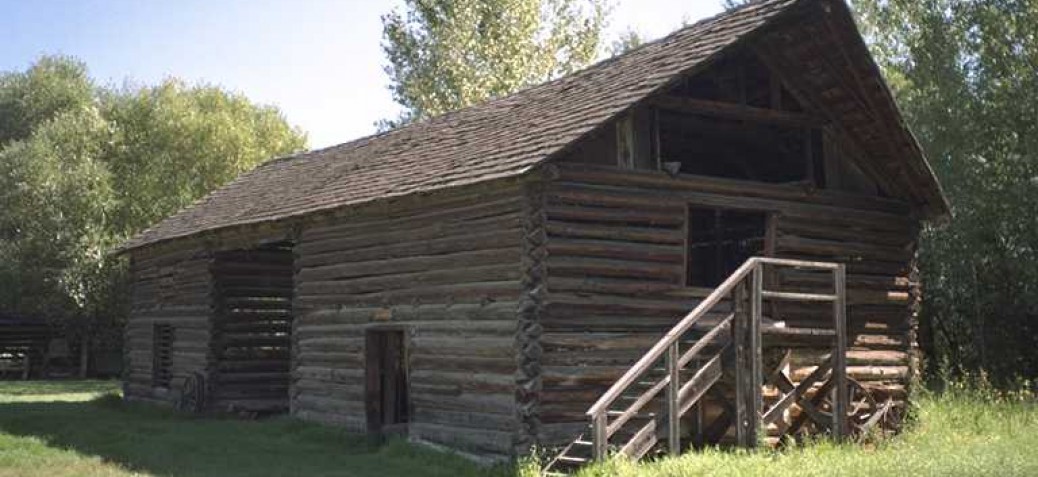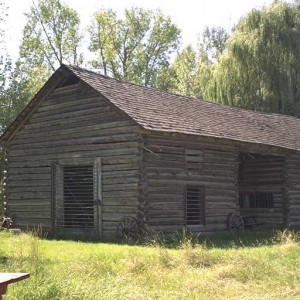Pandosy Mission Barn
Place Description
The historic place is the two-storey round log Pandosy Mission Barn built in 1886 in Pioneer vernacular styling, and located at 3685 Benvoulin Road as part of the multi-building Pandosy Mission complex in Kelowna's Mission sector.
Heritage Value
The Pandosy Mission is often called the most important heritage resource in Kelowna. This barn is one of four surviving structures built for the Mission, although it was moved a considerable distance to its present site. The Mission of the Immaculate Conception, located here by the Oblate Order in 1860, was the base for widespread missionary activity from Kamloops to the American border. As the first permanent white settlement in the Central Okanagan, it has a long list of 'firsts' for the area: first church; first school; first planting of fruit trees, grapes, and tobacco. For 30 years the Mission was the focus of settlement, until the Benvoulin and Kelowna townsites were laid out. The restored Pandosy Mission is now the largest and most respected heritage conservation site in the area.
The Pandosy Mission Barn has heritage value for providing evidence of the extensive livestock holdings and agricultural productivity of the Okanagan Mission in its heyday, a generation after the first settlement in 1860. It vies for honours with the barn of c.1884 on the Casorsos' Pioneer Farm as the oldest barn in Kelowna.
This barn was begun about 1886. It is built of saddle-notched round logs, and has value as a very good example of that building technique. It comprises two separate units ('cells') connected by an open and roofed middle section, which allowed hay wagons to pass through. The lower level was used for stables and equipment storage, while the upper level was a hayloft. The barn was a vital component of the Mission farm. It originally stood about 500 feet south of its current location. It reminds us that the Okanagan Mission, as well as being a centre for evangelization, was also a large-scale flourishing agricultural operation, which at its high point comprised 2,000 acres of land, with 500 head of cattle and 35 horses. It was managed by two lay brothers of the Oblate Order, Brother Joe and Brother Felix, as well as by hired workers. As an example of the latter, in 1883 Giovanni Casorso, like several other early settlers in the area, started out by working at the Mission.
The building has value for the effort put into its conservation. It was donated to the Pandosy Mission Committee in 1972 by Ben Greening, on whose farm it then stood. In 1973 it was moved to its present location - a major job, since it is 62 feet long, 22 feet wide, and weighs between 40 and 50 tons. It now accommodates a display of farm equipment as part of the heritage education function of the Pandosy Mission.
Character Defining Elements
- Vernacular log construction, with round logs and saddle-notched joints
- Two-storey barn, comprising two units ('cells') connected by an open, but roofed, middle section
- Long, gable-roof building
- Vertical boards in the gable ends
- Stairs at one end
- Projecting ridge over the stairs, with angled eaves
- Beams of the second floor visible between external logs
- Part of the 10-building Pandosy Mission complex





